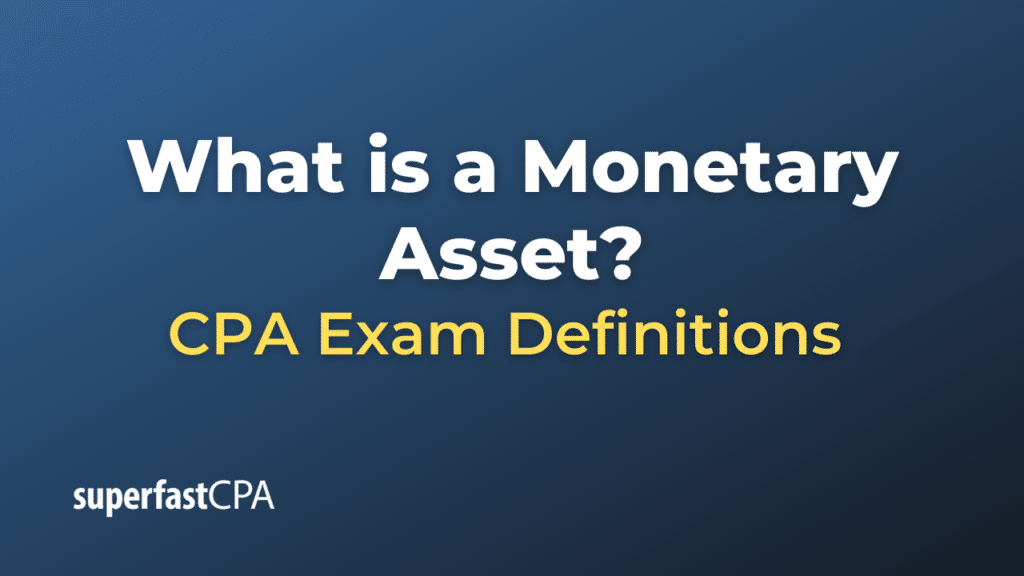Monetary Asset
A monetary asset is any asset that can be easily converted into a fixed or determinable amount of money. In other words, these are assets that are either money already or can be converted into money on demand. They are liquid assets that carry a precise value which does not fluctuate with market conditions.
Examples of monetary assets include:
- Cash: This is the most liquid of all assets and can be used directly to acquire goods or services.
- Cash Equivalents: These are investments that can be readily converted into cash with minimal risk of change in value. This includes items like Treasury bills, short-term government bonds, marketable securities, and money market holdings.
- Accounts Receivable: This refers to the money owed to a company by its customers. While it’s not cash, it’s expected to be converted into cash when the customers pay their bills.
- Notes Receivable: These are formal promissory notes that obligate a borrower to repay a loan to the lender. The note will detail the loan amount (the principal), the interest rate, and the maturity date.
On a balance sheet, these assets are usually listed in order of liquidity, with the most liquid assets listed first. It’s also worth noting that monetary assets contrast with non-monetary assets, which cannot be readily or directly converted into a fixed amount of money. Non-monetary assets include things like property, plant and equipment, long-term investments, inventories, and intangible assets like patents and trademarks.
Example of a Monetary Asset
Let’s consider an example using a fictitious company, ABC Corp.
ABC Corp’s balance sheet might list the following monetary assets:
- Cash: ABC Corp has $500,000 in cash held in various bank accounts.
- Cash Equivalents: ABC Corp has invested $200,000 in Treasury bills that mature in less than 90 days.
- Accounts Receivable: ABC Corp has sold goods worth $300,000 to various customers who have not yet paid for these goods. This amount is expected to be collected within one year.
- Notes Receivable: ABC Corp lent $100,000 to another company, XYZ Corp. This loan, represented by a promissory note, will be repaid with interest in 18 months.
In this scenario, ABC Corp’s total monetary assets amount to $1,100,000 ($500,000 + $200,000 + $300,000 + $100,000).
Each of these assets represents money or an asset that can be readily converted into a known amount of cash. This liquidity is what classifies them as monetary assets. Non-monetary assets, like buildings, equipment, or intellectual property, are not included in this category because their value can’t be easily converted to a fixed cash amount.













